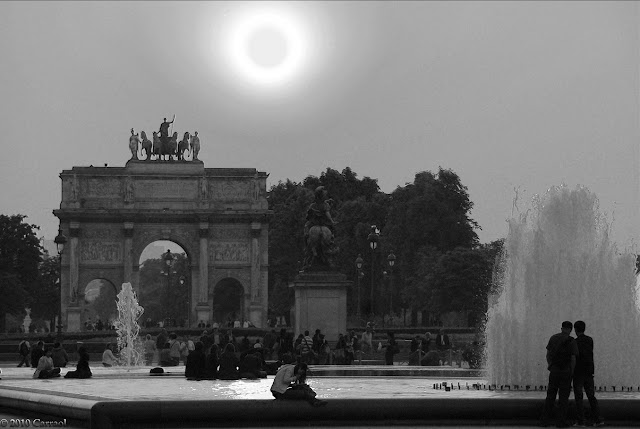 |
| Musée du Louvre |
| ||
 |
| Bacchus Roman, Imperial. 2nd Century AD |
 |
| Portrait d'Antinoüs en Osiris 130 ap. .J.-C. |
 |
| Potrait of man from the time of Emperor Claude 40-44 ap. J.-C. |
The Magic of the Cities.
Zen promotes the rediscovery of the obvious, which is so often lost in its familiarity and simplicity. It sees the miraculous in the common and magic in our everyday surroundings. When we are not rushed, and our minds are unclouded by conceptualizations, a veil will sometimes drop, introducing the viewer to a world unseen since childhood. ~ John Greer
 |
| Musée du Louvre |
| ||
 |
| Bacchus Roman, Imperial. 2nd Century AD |
 |
| Portrait d'Antinoüs en Osiris 130 ap. .J.-C. |
 |
| Potrait of man from the time of Emperor Claude 40-44 ap. J.-C. |
 |
| Hermès tying his sandal. Roman II Century BC |
 |
| Bacchante shadow (a priestess or female votary of Bacchus) |
 |
| 1969 curiosites desirables - shop window sign: Le Rabbit un ami qui vous veut du bien. (The Rabbit a friend who loves you well) |
 |
| Out of the blue - refreshing in one of the Louvre pools- |
 |
| The Cellist |
 |
| L'Arc du Carrousel The Arc de Triomphe du Carrousel is at the eastern end of the so-called Axe historique ("grand historic axis") of Paris, a nine-kilometre-long linear route which dominates much of the northwestern quadrant of the city. It is, in effect, the backbone of the Right Bank. Looking west, the arch is perfectly aligned with the obelisk in the Place de la Concorde, the centerline of the grand boulevard Champs-Élysées, the Arc de Triomphe at the Place de l'Étoile, and, although it is not directly visible from the Place du Carrousel, the Grande Arche de la Défense. Thus, the axis begins and ends with an arch. When the Arc du Carrousel was built, however, an observer in the Place du Carrousel was impeded from any view westward. The central block of the Palais des Tuileries intervened to block the line of sight to the west. When the Tuileries was burned down during the Paris Commune (1871) and its ruins were swept away, the great axis, as it presently exists, was opened all the way to the Place du Carrousel and the Louvre. |